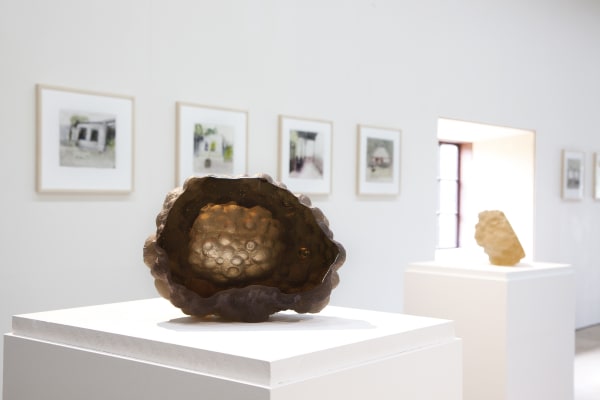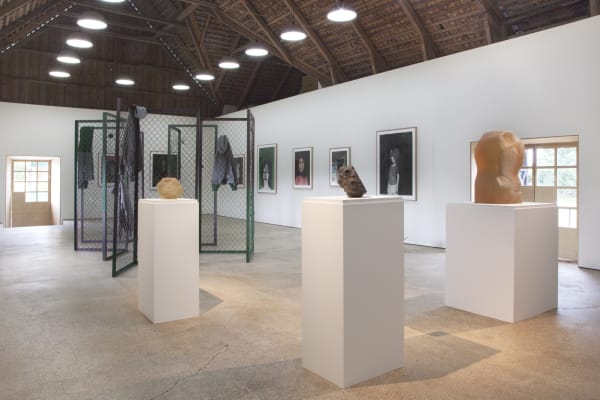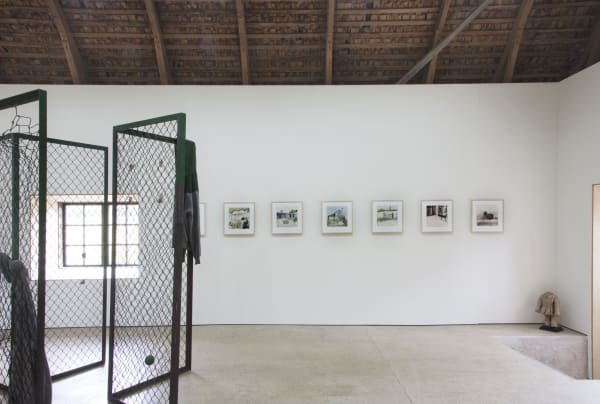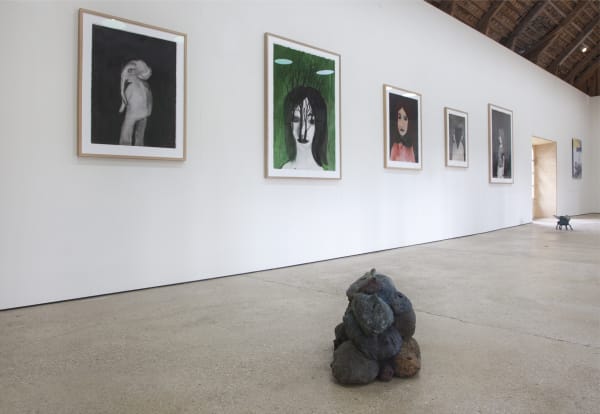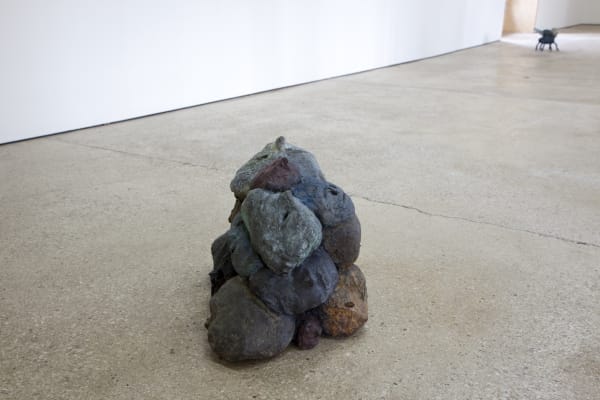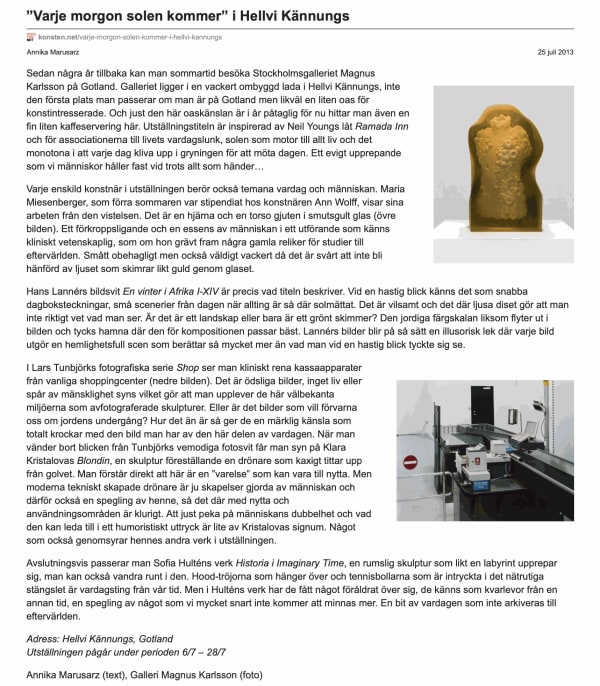Varje morgon solen kommer: Hellvi Kännungs, Gotland
This summer's exhibition at Hellvi Kännungs brings together five artists from different generations and traditions. The exhibition title is inspired by Neil Young's song Ramada Inn where the lyric line Every Morning Comes the Sun repeats as a kind of mantra. It is a reminder of the passage of time and how our repetitively structured daily matters has a central role in our lives. Everyday life is a mutual theme among the artists in this exhibition.
The objects around us wear out and our physical environments transform due to our everyday cyclical routines as time passes by. But in Hultén's works, which consists of five structures of familiar objects from an urban space, time has adopted other patterns. A chain of events as well as the artist's reconstruction of different objects has been repeated in varying order. The process becomes a game with the passage of time. A beginning and an ending from various positions, but time itself never change direction. Hultén's reconstructions appear to be left in a hurry, a sweater is thrown on a fence, but in a gesture to mix fiction and reality it is in fact carefully positioned. Nothing is rejected or thrown offhandedly. How are things organized when we leave a place or when the sun goes down? What do we bring into tomorrow and all the days that follow? Material things, our physical environment or the self is neither static nor constant.
Miesenberger's glass tries nevertheless to capture time and something that is constant, possibly in an attempt to distil a piece of eternity. Here she shows a series of glass sculptures from uranium glass that were created during a residency at Ann Wolff, in Kyllaj, Gotland last summer. Uranium glass has a half life of 4.5 billion years. A torso, a brain, a (body) shape, a sequence of events, a piece of a self has been encapsulated in the glass and rescued from mortality, in a movement towards getting in touch with time in the present.
4.5 billion years is an incredible number of days. Although it sometimes feels like they pass us by in high-speed. In Hans Lanner's images, scenes taken from the everyday-life is passing by like silhouettes and hints of buildings viewed through a window on a moving train. Some details have been given special attention while surroundings passes by in a blur. We are still moving forward, between life's different days and places. The sites appear familiar at the same time as they dissolve into non- places in the constant movement. The few selected details helps entire scenes to become engraved into our memory. A streak of light, a scent, a blue jar or a cat stays with us (and throws a shadow over what we forget). When we look back, with presence or in a dream, we pile up these details, layer by layer into a new whole, a new day and a new self. Lannér spent five months in a small remote village near Mount Kenya. The series, made with dry pastels and watercolour, that he shows reflect the experience of staying at one particular location for a long time.
The morning sun brings a transition from night to day, from sleep to awakening from the unconscious to the conscious. It is in this borderland Kristalova's characters, here presented in a number of larger works on paper, lingers. In the "in-between", in the everyday's inner world, just before we direct our attention outwards, to our daily duties. The inner world contains our memories and fantasies, and out of this abstract world her characters appear, as if to embody a certain state of mind. They face the viewer in a room where the self is able to discover its various mirror images. The characters, that borrows their expressions from fables and mythology, do not belong in a fantasy world but are real-life narratives and investigations of general human failings, disruptive emotions and of what it means to be human.
It is where reality is present and when our worldly duties become highlighted that Tunbjörk find his scenes that sometimes turn into structures and abstract expressions. Tunbjörk presents photographs from an ongoing photographic work from various situations in shopping malls and stores. Like Hultén, he works with repetition and points at human consumption and the obscure sides of existence. He does not devote attention to life's ceremonial or major events that already have a designated place in our memory. In his photographs he perpetuates the absurdity of life's recurring trivialities.
More information about the exhibition.
More information about Hellvi Kännungs.
Please contact the galley for more information and visuals.
Opening Reception Saturday July 6, 12-4 pm!
Gallery hours:
Every day 12-4 pm.
or by appointment.
+46708/106906 or +46498/22 80 42
Address:
Hellvi Kännungs 207, 624 50 Lärbro, Gotland, Sweden
Sofia Hultén is born in 1972 in Stockholm. She lives and works in Berlin, Germany.
More information: www.sofiahulten.de, www.nordenhake.com, www.konradfischergalerie.de
Klara Kristalova is born in 1967 in Prag. She lives and works in Norrtälje, Sweden.
Hans Lannér is born in 1947 in Skene, Sweden. He lives and works in Stockholm, Sweden.
Maria Miesenberger is born in 1965 in Svalöv, Sweden. She lives and works in Stockholm, Sweden.
More information: www.larsbohmangallery.com
Lars Tunbjörk is born in 1956 i Borås, Sweden. He lives and works in Stockholm, Sweden.
More information: www.gungallery.se
Thanks to Galerie Nordenhake, Konrad Fischer Galerie, Lars Bohman Gallery and Gun Gallery for collaboration with this exhibition.







